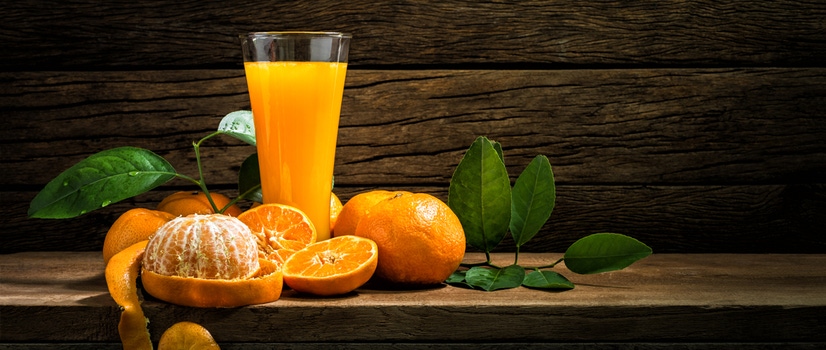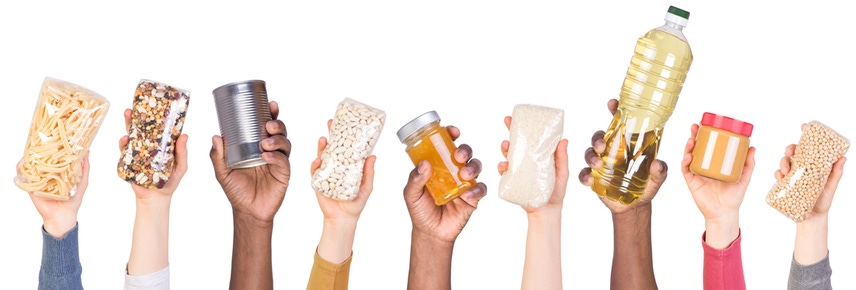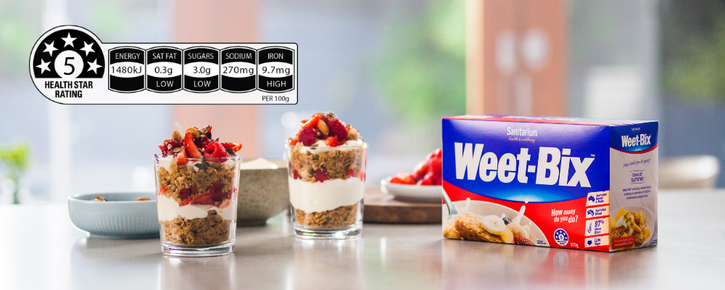Australian Department of Health. Discretionary food and drink choices. [Internet] 2015 [cited 2016 July 4]; available from: Nutrition https://www.eatforhealth.gov.au/food-essentials/discretionary-food-and-drink-choices
World Health Organisation. WHO calls on countries to reduce sugars intake among adults and children. [Internet] 2015 [cited 2016 July 4]; available from: http://www.who.int/mediacentre/news/releases/2015/sugar-guideline/en/
Choice. Sugar, by any other name. [Internet] 2015 [cited 2016 July 4]; available from: https://www.choice.com.au/food-and-drink/nutrition/food-labelling/articles/added-sugar-on-food-labels-070815
Food Standards Australia and New Zealand. NUTTAB 2010 Online Searchable Database. [Internet] 2010 [cited 2016 July 4]; available from: http://www.foodstandards.gov.au/science/monitoringnutrients/nutrientables/nuttab/Pages/default.aspx

Natural vs added sugar: everything you need to know
As great as it tastes, sugar has been blamed for everything from obesity to cancer. But isn't it the same stuff that makes fruit taste so good? So, how can something in fruit be bad for us?
There are plenty of myths out there on sugar that makes eating it sound worse than it is. But like most things, moderation is key and there are some foods that contain sugar that are better than others. Here, we answer all questions about sugar, the confusion about natural sweeteners versus added sugar, how much is okay to eat and how to read it on a label.
Dietary guidelines and sugar
The dietary guidelines advise us to limit our intake of foods and drinks containing added sugars, but also encourage us to embrace a diet packed with wholefoods including:
protein foods like legumes, nuts and seeds, fish, poultry, and small amounts of red meat (if desired), and
reduced fat dairy and dairy alternatives like milk, yoghurt, cheese and soy milk.
Sugar is not a bad word
You don’t need to ‘quit sugar’ or go ‘sugar free’ to be healthy.
Many wholefoods or food products - including wholegrains, legumes, fruits and vegetables, and dairy and dairy alternatives - contain some naturally occurring sugars and sometimes small amounts of added sugars. These natural sugars and added sugars are combined with fibre and nutrients, helping to slow down the release of sugar into your blood stream – keeping your blood sugars or blood glucose levels stable.
Subscribe to Wholicious Living to stay up-to-date with the latest health and nutrition advice.
The small amounts of natural or added sugars from these wholefoods won't impact your health, but avoiding wholefoods will. Many research studies show that having low intakes of protective wholefoods can increase your risk of:
weight gain
chronic diseases like heart disease, diabetes, osteoporosis and some cancers
reduced energy levels
poor gut health and constipation, and
poor mood and depression.
Avoiding wholefoods is not the answer. It's foods and beverages with large amounts of added sugars that we need to limit.
Sugar guidelines
The World Health Organisation (WHO) sugar guidelines, released in 2015, strongly recommend that you reduce your intake of ‘free’ sugars to less than 10% (about 50 grams or 12 teaspoons) of your total energy intake each day. This is partly to reduce your risk of dental caries but also to help protect against overweight and obesity.
So what does less than 10% of ‘free’ sugars look like?
The average adult eats around 8,700 kilojoules or 2,080 calories per day. So less than 10% of total energy from ‘free’ sugars would be 870 kilojoules (208 calories), which equals 50 grams or 12 teaspoons of sugar per day.
Subscribe to Wholicious Living to stay up-to-date with the latest health and nutrition advice.
This is not much when you consider that a small bottle of soft drink contains around 16 teaspoons and a small chocolate bar around 8 teaspoons.
The recent Australian Health Survey showed that half of all Australians (52%) exceed WHO’s recommendation and have an average of 60 grams (14 teaspoons) of ‘free’ sugar each day. The key contributors are soft drinks, sports drinks and energy drinks.
| Food | Serving size | Free sugars* | |
|---|---|---|---|
| (g) | (tsp) | ||
| Soft drink, cola flavour | 600mL bottle | 65 | 16 |
| Sports drink, all flavours | 600mL bottle | 42 | 10.5 |
| Chocolate bar, with nougat and caramel centre | 1 bar (60g) | 30 | 7.5 |
| Chocolate chip muffin | 1 muffin (100g) | 29 | 7 |
| Vanilla flavoured yoghurt | 1 cup (250mL) | 20 | 5 |
| Chocolate flavoured milk | 1 cup (250mL) | 12 | 3 |
| Vanilla ice-cream | 2 scoops (100mL) | 7 | 2 |
| Barbecue sauce | 1 tbs (15mL) | 7 | 2 |
| Sweet and sour sauce | 1 tbs (15mL) | 6 | 1.5 |
| French salad dressing | 1 tbs (15mL) | 2 | 0.5 |
| * There are about 4 grams of sugar in each teaspoon | |||
| Source: NUTTAB 2010 from FSANZ. | |||
Why are ‘free’ sugars such a problem?
According to the dietary guidelines and WHO, foods and beverages high in 'free sugar can be problematic for a few key reasons:
- Energy dense: In one bite, high sugar foods can deliver large amounts of kilojoules or calories to your body.
- Nutrient poor: Refined, high sugar foods like soft drinks, cakes and biscuits offer your body few nutrients and no fibre, leaving you with nutrient-less energy.
- Increase weight gain: High energy, nutrient poor foods can cause you to gain weight easily, leading to a higher risk of chronic diseases like heart disease and diabetes.
- Can replace the good stuff: High sugar foods can take the place of more nutritious foods in your diet.
- Can cause dental caries: High sugar foods are strongly linked with dental caries, which can become painful and expensive!
Food labels and sugar
When you're reading food labels and nutrition information panels, keep in mind that all sugars are included in the total sugars tally – including both natural and ‘free’ sugars.
When you’re reading a products ingredient list, remember that there are a variety of different sugars that can be added to foods that may be listed under different names. Other ingredient names for sugar are sucrose, glucose, fructose, lactose, maltose, dextrose, golden syrup, corn syrup, honey, malt, molasses, rice malt, rice malt syrup, agave, brown sugar, caster sugar, raw sugar and invert sugar.
What is rice malt syrup?
Rice malt syrup has become a trendy sweetener among ‘sugar free’ advocates mainly because it contains no fructose or sucrose.
It's derived from the starch of white or brown rice which is then broken down by enzymes and made into rice malt syrup - a form of pure sugar (simple glucose, maltose and maltotriose). Despite some low GI claims, rice malt syrup has an extremely high glycaemic index (GI) of 98 (like most sugars and sweeteners) so it’s quickly absorbed into your body which can cause your blood sugar levels to spike. Spoon for spoon, rice malt syrup has similar levels of energy as honey, contains no protein, no fat and no fibre, and has very little (if any) vitamins or minerals.
The punch line? Rice malt syrup is just like any added sugar and syrup and should be used sparingly.
For more information on reading food labels, read our article here.
Our top ‘sugar’ tips when shopping:
- Look mostly for products with less than 10-15 grams of total sugars per 100 grams.
Be mindful that added fruit pieces in a food product will increase the total sugar content, for example, when choosing breakfast cereals containing fruit (like sultanas and apple pieces), aim for less than 25 grams of sugar per 100 grams.
Foods are listed in the ingredients list in their order of quantity – from largest to smallest. Look carefully at where sugar is positioned on the ingredient list, but also check this against amount of sugar in the nutrition information panel, and the types of ingredients. Some ingredients such as fruit (already mentioned), and milk contain natural sugars so will inflate the total sugar. Similarly sugar may appear higher up an ingredient list if there aren’t many ingredients, or if the first ingredient makes up a large percentage of the product. It’s important to consider the whole food product and the nutrients it offers, as well as place in the diet.
Check the Health Star Rating - it'll provide you with an overall nutrient assessement of some food products, and can be used to compare similar foods. Then choose the healthier option!
Tips to eating less sugar
Focus on wholefoods: Wholefoods - like wholegrains, vegetables, legumes, fruits, nuts and seeds - are packed with nutrients and fibre and will satisfy your body just right, reducing your need and cravings for sweet things.
Give your tastebuds time: The less high sugar foods and drinks you have, the less you’ll crave them. Give your tastebuds some time and you’ll find the natural sweetness of wholefoods is enough for you.
Don’t add any sugar to your breakfast: Try adding fruits like banana, berries or dates to flavour your cereals and porridge. A dash of cinnamon works well too.
Choose water as your main fluid: Water keeps you fresh and hydrated, and helps you keep a healthy weight.
Subscribe to Wholicious Living to stay up-to-date with the latest health and nutrition advice.Try not to use sugar in coffee and teas or drink herbal teas as a healthier and tastier alternative.
Choose healthier snacks: Go for a piece of fruit, berries mixed with natural yoghurt, or a handful of unsalted roasted nuts instead of a chocolate or sweet biscuit.
Reduce the amount of sugar you use in your recipes: With most recipes you can reduce the sugar by half without noticing too much difference in the taste and texture. You can also try substituting the sugar for unsweetened apple sauce or a date puree.
Keep high sugar foods and fluids for special occasions and keep to small amounts. These include lollies, chocolates, cakes, biscuits, ice-creams, fruit juices, cordials, soft drinks, energy drinks and alcohol.
Remember to look at the big picture
While limiting foods and beverages high in ‘free’ sugars is important, remember to step back and look at the big picture too. Sometimes we get so focused on single nutrients that we forget to look at our food and dietary pattern as a whole.
Sugar is something you should be mindful of but it shouldn’t take all your focus. Instead, consider the amount of wholefoods you have in your diet each day. Wholegrains, vegetables, legumes, lean protein foods, low fat dairy products, fruits, nuts and seeds are packed with all the key nutrients your body needs. By focusing and using these key food groups daily, you’ll not only nourish your body better but other foods high in ‘free’ and added sugars will naturally disappear and be ‘crowded out’ by all the good stuff.

The latest nutrition advice, plus health and wellness tips delivered to your inbox monthly

